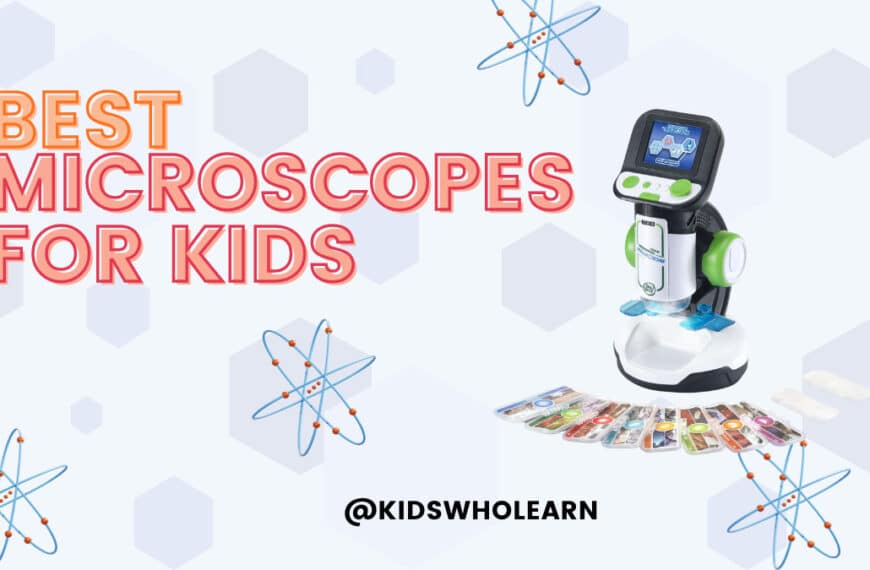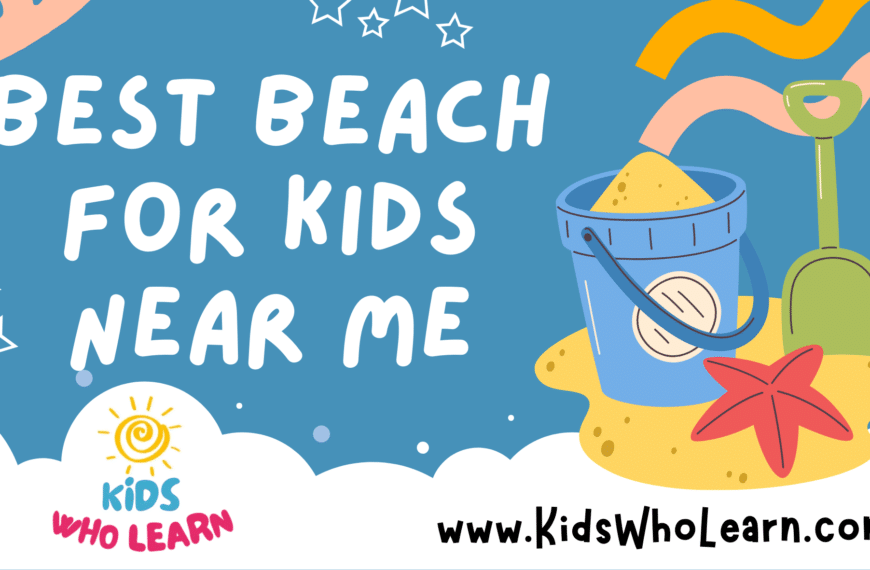When we plan enriching activities for children, museums tailored specifically for the younger audience are fantastic destinations. These spaces offer a unique blend of education and entertainment, making learning fun and accessible. Kids’ museums are designed to inspire curiosity and creativity through hands-on, interactive exhibits that encourage exploration and active participation.
Providing a family-friendly environment, these institutions make it easy for parents to engage with their children in meaningful ways. Through educational programs, classes, and special events targeted at young minds, museums can become a cornerstone of a child’s developmental journey. Moreover, the exhibits are often curated to be both age-appropriate and stimulating, featuring a variety of topics to capture a child’s diverse interests.
Accessibility and practical visitation tips are also crucial for a stress-free experience, and many museums understand this by offering resources and guidance for parents. With exhibits and events regularly updated to reflect new findings and seasonal themes, a visit to a kid-focused museum offers a fresh adventure every time.
Key Takeaways
- Museums for kids combine education with fun through interactive exhibits.
- A family-friendly atmosphere and educational programs enrich children’s learning.
- Regular updates to exhibits and events ensure a novel experience with each visit.
Museums with Interactive Exhibits
Engaging children in learning through play and hands-on experiences is fundamental to nurturing curiosity. Museums with interactive exhibits excel in transforming education into a dynamic adventure.
Science and Natural History Focus
The Children’s Museum of Indianapolis is home to the extraordinary Dinosphere where kids can uncover the wonders of prehistoric life. This vivid recreation allows young paleontologists to interact with real fossils and take part in excavation simulations, fueling their fascination with dinosaurs and the natural world.
- Smithsonian’s National Museum of Natural History invites discovery at every turn with its Ocean Hall and Butterfly Pavilion. Through interactive activities, children engage with science topics, learning about natural history in a tangible, memorable way.
Art and Creativity
Creative minds blossom at institutions like the Children’s Museum of Denver, where an Art Studio is designed for children to express and expand their artistic skills. By exploring various mediums and techniques, children enhance their creativity and imagination.
- Boston Children’s Museum celebrates art through interactive installations where kids can create their personal masterpieces. This offers hands-on exposure to art, making abstract concepts of color and form accessible to young minds.
Technology and Innovation
- The Exploratorium in San Francisco integrates science and creativity, providing a space where technological marvels come to life through interactive exhibits. Here, visitors explore physics, biology, and perception, nurturing an early love for innovation.
- At the Liberty Science Center, we discover cutting-edge exhibits that push the boundaries of technology. Amidst a landscape of discovery, children learn about robotics, energy, and health through inventive, hands-on experiences.
Specialized Children’s Museums
- Philadelphia’s Please Touch Museum is dedicated to learning through tactile experiences. With a variety of play spaces, children dive into themed areas that encourage exploration and sensory discovery.
- Rochester’s The Strong, featuring the National Toy Hall of Fame, is a paradise of play for children. Interactive exhibits here focus on the history and innovation of playthings, engaging children in a world where fun and learning intersect seamlessly.
Educational Programs and Classes
We recognize the importance of educational programs that stimulate young minds and encourage a lifelong love of learning. Museums across the globe are curating specialized educational programs and classes that align with children’s needs and interests. We’ll look at some of the most compelling offerings within STEM education, story time and reading activities, and art workshops, each designed to nurture curiosity and imagination through hands on experiences and collaborative learning.
STEM Education
Many science centers, including the likes of Exploratorium, provide dynamic STEM (science, technology, engineering, and math) education programs that captivate children’s interest in the natural world. These classes foster scientific inquiry and critical thinking skills by allowing kids to interact with exhibits that focus on perception and senses, reflecting a strong educational approach in understanding complex scientific concepts.
- Focus Areas:
- Perception & Senses: Kids explore how the human body interprets various stimuli.
- Curiosity in Science: Encourages questions, experimentation, and exploration.
- Example Programs:
- Exploratorium’s Tinkering Studio: A hands-on space for kids to build and create with real tools and materials.
- Robotics Workshops: Where children learn coding and engineering principles.
Story Time and Reading Activities
Our collaboration often extends into the calm corners of libraries where story time and reading activities are expertly crafted to enhance literacy and foster a love of books. Educational programs often include themed story times that promote active listening skills and encourage group participation in a Cooperation Station setting.
- Key Elements:
- Themed Reading: Books chosen to inspire and excite young readers.
- Interactive Engagement: Activities that encourage participation during story time.
- Sample Session:
- Library Adventures: An interactive journey through literature with activities and character visits.
Art Workshops and Studios
Art workshops and studios specialize in sparking creativity and imagination. Museums harness these classes to provide children with an artistic outlet, enabling self-expression through various mediums. Whether through open-ended Art Studios or focused workshops, we aim to offer a canvas for children’s burgeoning artistry.
- Artistic Endeavors:
- Creativity Workshops: Sessions focused on developing unique pieces of art.
- Mixed Media Exploration: Opportunities to work with different materials.
- Art Spaces:
- Young Artist Studio: A dedicated space for children to create and display their artwork.
- Family Art Days: Special events where families can create art together.
Educational programs and classes in museums are instrumental in shaping the innovative minds of the future. They provide a platform for holistic growth—academically, socially, and creatively.
Museums by Location
We’ve organized a selection of the best museums for children by region, making it easy for you to find the perfect educational destination based on your location.
New York City and East Coast
In New York City, young minds can enjoy the Liberty Science Center, just a short trip from the city, offers engaging exhibits and the largest IMAX Dome theater in the United States. Nearby, the Boston Children’s Museum in Massachusetts provides interactive educational experiences.
- Philadelphia, Pennsylvania: Please Touch Museum
- Indianapolis, Indiana: The Children’s Museum of Indianapolis
Midwest Museums
When we explore the Midwest, Chicago stands out with the Chicago Children’s Museum on Navy Pier. Another gem is the Minnesota Children’s Museum in Saint Paul, where play and learning are intertwined.
- Indianapolis, Indiana: The Children’s Museum of Indianapolis
West Coast and Pacific
Heading over to the West Coast, San Francisco‘s The Exploratorium offers explorative science experiences. In California, creativity and curiosity are sparked at museums like the California Science Center.
- Denver, Colorado: Children’s Museum of Denver
Southern US and Beyond
In the Southern US, the Houston area boasts the Children’s Museum Houston, packed with innovative exhibits. San Antonio, Texas, impresses with The DoSeum, where interactive learning is in full swing.
- Florida and Georgia also house numerous children’s museums providing educational fun.
Exhibit Highlights and Features
In this section, we focus on the standout exhibit features that make for memorable, educational, and engaging visits for children at various museums.
Hands-On and Interactive Spaces
Interactive exhibits provide kids with hands-on learning experiences. The Children’s Museum of Indianapolis boasts a variety of engaging and immersive activities. For example, kids can explore science through interactivity at the Dinosphere where they can examine real fossils.
- The DoSeum in San Antonio offers vibrant play spaces tailored for imaginative and creative play, fostering an environment where kids are encouraged to touch, play, and explore.
Science and Discovery
Science centers like the Liberty Science Center offer exhibits where kids can learn about science, technology, engineering, and math (STEM) through interactive displays. Highlights include the Touch Tunnel and Infinity Climber.
- The National Air and Space Museum showcases awe-inspiring exhibits like the actual Apollo Lunar Module, allowing children to gain a tangible understanding of space exploration.
Cultural and Historical Exhibits
Educational exhibits about various cultures and historical moments come alive for kids at the National Building Museum. Their hands-on building activities and exhibitions about architecture and design distinctly engage young minds in the cultural aspects of our built environment.
- The U-505 Submarine at Chicago’s Museum of Science and Industry offers kids a real-life glimpse into history, where they can board a true WWII German submarine.
Nature and Wildlife
For a closer look at nature, the National Museum of Natural History presents a Butterfly Garden and Insect Zoo. Kids can observe a variety of insects and the life cycle of butterflies in a controlled live setting that promotes environmental education.
- Interactive exhibits relating to biology and ecology engage children in wildlife conservation topics, making them aware of the diversity and fragility of the ecosystems around them.
Accessibility and Visitation Tips
When planning a visit to a museum with children, considering accessibility and visitation strategies can lead to a more enjoyable and stress-free experience. Focusing on factors such as entry fees and family amenities, as well as picking the best times to visit, can greatly enhance your family’s cultural outing.
Membership and Entry Fees
Most children’s museums offer a variety of membership options that can make frequent visits more affordable and efficient. A family membership, for example, typically includes unlimited free admission for immediate family members for one year, as well as discounts on special exhibitions, events, and gift shop purchases.
- Single Visit Entry Fees:
- Individual: $10-$20
- Family Pass (2 adults, 2 kids): $35-$60
- Membership Fees (Annual):
- Individual: $60-$100
- Family: $75-$150
Family Amenities
We find that museums designed for kids usually offer several family-friendly amenities to make your visit comfortable and accessible. These can include:
- Stroller Access: Wide pathways and ramp access throughout the facility.
- Rest Areas: Benches and quiet zones for feeding or resting.
- Changing Facilities: Clean and convenient parent-child bathrooms.
- Hands-On Learning: Interactive exhibits and play areas tailored to engage young minds.
Best Times to Visit
Identifying the best times to visit can help you avoid crowds and make the most of your trip. We recommend:
- Weekdays: Late mornings on Tuesdays and Thursdays are typically less crowded.
- Weekends: Arrive early, right when the museum opens, to enjoy quieter galleries.
- Off-Peak Seasons: Consider visiting during the fall or late winter months.
Special Events and Seasonal Programs
When we visit museums with our kids, it’s important to take advantage of special events and seasonal programs that enhance the educational experience. These offerings often coincide with holidays and seasonal changes, providing a dynamic and interactive learning environment.
Holiday and Thematic Events
During holidays, museums often host themed events that bring historical and cultural celebrations to life. For example:
- Thanksgiving: We can participate in family-friendly activities that explain the history of the holiday with crafts and storytelling sessions.
- Halloween: Museums may transform exhibit spaces into spooky, yet educational, experiences that both entertain and inform kids about historical superstitions and folklore.
Summer Camps and Workshops
- Summer Camps:
- Science Museums: Offer weekly camps focusing on specific themes like robotics, space, or ecology, including hands-on projects and experiments.
- Art Museums: Provide art-focused camps where children explore various mediums, techniques, and art history.
- Workshops:
- Dates: Usually on weekends; some museums offer weekly classes
- Programs: Range from single-visit classes to multiple-session courses, often tied to current exhibits
These programs cater to a range of ages and interests, making sure that there’s something for every child looking to explore, learn, and create.
Additional Resources for Parents
When planning educational trips to museums that are optimal for children, we understand the importance of proper preparation and support. We have gathered key information on travel amenities and educational resources, particularly focusing on locations like London and Honolulu, to ensure a smoother and more informative experience.
Travel Tips and Accommodations
London: When traveling with kids, it’s essential to look for family-friendly lodging near top museums. We recommend using affiliate links through reputable travel writers to book your stay as they often provide detailed reviews and may offer special discounts.
| Accommodation | Proximity to Museums | Family Amenities |
|---|---|---|
| Hotel A | 0.5 miles from Museum X | Childcare services, family rooms |
| B&B B | 1 mile from Museum Y | Complimentary breakfast, cots available |
Honolulu: For a tropical museum adventure, seek accommodations with easy access to both the beach and cultural attractions. Here’s our quick guide:
- Condo C: Near Honolulu’s Children’s Museum, with kitchenette for easy meals
- Resort D: Offers shuttle service to museums and cultural sites, along with children’s activity programs
Educational Support Materials
We advocate enhancing the museum visit with educational programs and materials tailored for young minds.
- London’s Museums: Many offer downloadable activity sheets and guides that align with current exhibitions. Check the museum’s official website before visiting.
- Honolulu’s Learning Programs: Participate in hands-on educational programs designed for children, bookmarking pages with affiliate links for later reference and discounts.
By equipping ourselves with thorough travel plans and educational support, we ensure that museum visits are not only enjoyable but also enriching for our children.
Conclusion
We have explored a range of museums that are designed with children in mind, emphasizing both fun and education. Many museums offer interactive exhibits that cater to the innate curiosity and energy of young minds. These family-friendly destinations provide an enriching environment where learning and play go hand-in-hand.
Museums for Kids:
- Emphasize interactive and hands-on exhibits
- Are educational and designed to spark interest in various subjects
- Provide fun experiences that engage children of all ages
Our recommendations focus on establishments that understand the importance of a family-friendly atmosphere. These places often feature facilities such as:
- Rest areas for families to relax
- Kid-friendly dining options
- Workshops and guided tours tailored for children
Choosing the right museum for a family outing involves considering the unique interests and ages of the children, ensuring there’s something for everyone to enjoy. We encourage families to visit museums that bridge the gap between learning and enjoyment, creating lasting memories and a thirst for knowledge in young visitors.
Remember, each visit contributes to a child’s growth, adding to their understanding of the world around them. We trust our insights will help in planning a visit that is both educational and entertaining for children and their families.
Frequently Asked Questions
In this section, we address some of the common inquiries about the best children’s museums known for their educational value and engaging exhibits. We provide specific details to help families and educators make informed decisions about their visits.
Which children’s museum in the United States is considered the top-rated for educational value?
The Children’s Museum of Indianapolis is widely recognized as one of the top-rated in the United States for its educational value. It offers immersive experiences through interactive exhibits like the Dinosphere and Take Me There.
What factors make a museum engaging and appropriate for toddlers and young children?
Museums that are engaging for toddlers and young children often include sensory-rich environments, interactive and touch-friendly exhibits, and areas designed for play and exploration. Elements that encourage imaginative play and participation promote an engaging experience.
How does the Smithsonian Institution cater to young visitors, and what exhibits are best suited for them?
The Smithsonian Institution caters to young visitors through its variety of interactive exhibits and family-friendly programs. The National Air and Space Museum is particularly suited for children with exhibits like the “How Things Fly” gallery.
What are the most interactive children’s museums located in the Northeastern United States?
In the Northeastern United States, the Boston Children’s Museum and the Please Touch Museum in Philadelphia are among the most interactive. Both museums encourage hands-on learning through play-based exhibits and innovation spaces.
What age range do children’s science museums typically cater to, and how do they tailor experiences to different age groups?
Children’s science museums typically cater to ages 3-14, adjusting experiences to be age-appropriate. For younger visitors, exhibits focus on tactile and sensory experiences, while older children might engage in more complex experiments and educational programming.
Can you recommend children’s museums that emphasize hands-on learning and science education?
We recommend the Exploratorium in San Francisco and the Museum of Science and Industry in Chicago for their emphasis on hands-on learning and science education. These museums offer engaging workshops and interactive exhibits that make learning about science fun for children.















